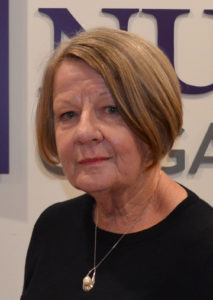NZNO College of Emergency Nurses (CENNZ) chair Sue Stebbeings is calling for urgent nurse recruitment, alongside long-term solutions, after a safe staffing review revealed the extent of pressures on emergency departments.
“The report validates what emergency nurses have been saying for many years, and includes the moral distress of practicing in a unsafe situation where they can’t provide fundamental care,” Stebbeings said.
The Government’s Safe Staffing Report released this month found almost no emergency departments (EDs) had installed the Trendcare software needed for safe staffing programme Care Capacity Demand Management (CCDM), putting them “significantly behind” other departments.

ED nurses were “very stretched” and the most dissatisfied nurses surveyed, the review found. Only 15 per cent felt they were able to provide complete patient care; 52 per cent said almost all their shifts were understaffed and 58 per cent were asked to do extra shifts “several times a week”.
‘This report has demonstrated that there are not enough skilled ED nurses to provide the required care’
Stebbeings said the findings highlighted the “invisibility” of emergency nursing work, as people tended to view ED as a “doorway” to pass through. But emergency nurses suffered some of the highest rates of burnout, she said.
“Anyone who has attended or taken their loved one to an ED knows the importance of skilled compassionate nursing care. This report has demonstrated that there are not enough skilled ED nurses to provide the required care.”
The extent of the shortfall was unclear, without Trendcare to measure staffing against patient demands, but more emergency nurses were “desperately” needed, she said.

Constant requests for extra shifts and overtime negatively impacted their wellbeing and resilience. The findings were a “wake up call” to district health board (DHB) leaders, who were “failing in their responsibilities to provide safe quality care to their communities”, Stebbeings said.
CENNZ wrote to review panel head Hilary Graham-Smith last October, warning EDs had reached “crisis levels” after decades of short-staffing and rising demands and complexity. Patients commonly stayed in ED for up to 36 hours, requiring inpatient and mental health care, as well as acute, the letter said.
CENNZ wanted to be part of the review panel’s proposed national work programme to oversee the delivery of safe staffing, Stebbeings said.
Low morale
Former NZNO associate professional services manager, Graham-Smith, heads the Nursing Advisory Group which carried out the review late last year at the behest of Minister of Health Andrew Little.
ED nurses were able to see how understaffed they were through the yellow, amber and red alert levels, but could not do anything to change this. “This has a negative effect on staff morale and trust in the system”, the review found.
ED nurses interviewed felt CCDM could be useful if there were enough nursing staff to fill the gaps it identified. The review found:
- Trendcare did not capture the initial triage/waiting time;
- It not keep up with the fast pace;
- ED nurses did not have time to enter patient data due to workload.
- Limited computers;
- Lack of explanation to ED nurses over the purpose and benefits of Trendcare, so they saw entering data as “another job”.
The review found CCDM had only been implemented in half the country’s DHBs after 15 years, which had put nurses under immense mental health pressure amid chronic and worsening understaffing.
It concluded CCDM could deliver if it was funded and implemented properly, and there were “sufficient nurses in the pipeline to recruit to identified vacancies”.



